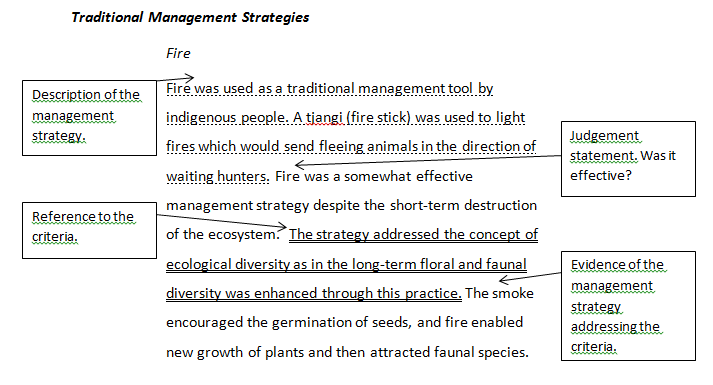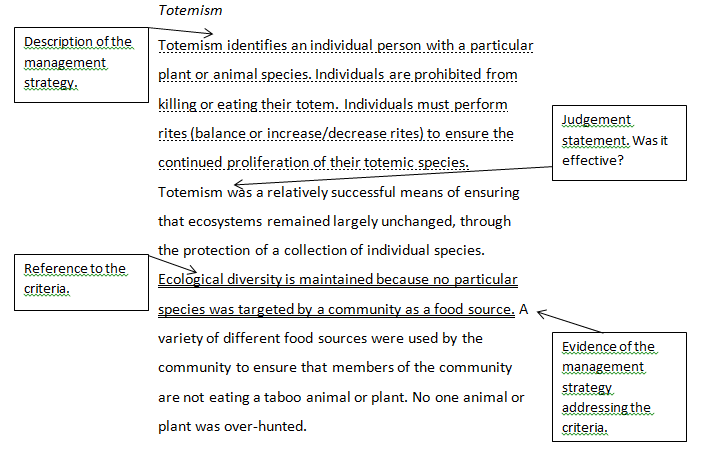Evaluating - Sample
Question: Evaluate traditional and contemporary management strategies applied to intertidal wetlands.
Below are some examples of paragraphs that could be included for this question.
Note: I have not included an introduction or conclusion, or any paragraphs related to contemporary management strategies.
Below are some examples of paragraphs that could be included for this question.
Note: I have not included an introduction or conclusion, or any paragraphs related to contemporary management strategies.
Introduction:
(You will need to write your own introduction. Ensure that you include an overview of the topics you will discuss in your response.)
(You will need to write your own introduction. Ensure that you include an overview of the topics you will discuss in your response.)


